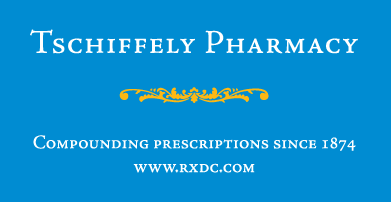
To Buy Motilium Online Visit Our Pharmacy ↓

Understanding What Motilium Is and How It Works
Motilium, known generically as domperidone, is a medication that's most commonly used to address gastrointestinal discomfort. Its primary action focuses on enhancing the movement of food through the stomach, thereby ensuring a smoother digestive process. This fascinating drug works by blocking dopamine receptors in the gut. Dopamine, a neurotransmitter, can slow down the digestive process when its receptors are activated. By preventing this action, Motilium facilitates quicker gastric emptying, reducing the feeling of nausea.
Furthermore, its ability to reduce the backward flow of stomach contents into the esophagus adds to its efficacy. It's particularly useful in cases where nausea is induced by slow gastric movement. Understanding its role in the gut is essential for appreciating its impact on nausea symptoms.
```html
| Aspect | Details |
|---|---|
| Generic Name | Domperidone |
| Main Action | Blocks dopamine receptors in the gut |
| Primary Benefit | Enhances gastric emptying |
Common Causes of Nausea and Vomiting

Nausea and vomiting are often symptoms rather than standalone conditions. They can be triggered by a multitude of factors, including morning sickness during pregnancy, motion sickness, or as an aftereffect of chemotherapy. Other common causes include viral infections like the flu or norovirus, food poisoning, and gastrointestinal disorders such as gastritis or IBS. Understanding these underlying causes is crucial as it helps in selecting the appropriate treatment approach, like motilium, which targets the symptomatic relief of nausea and vomiting while addressing underlying issues.
Motilium is particularly beneficial in targeting nausea related to slow gastric emptying, a condition known as gastroparesis. This is notable in diabetic patients, where delayed stomach emptying often leads to persistent nausea and discomfort. Moreover, anxiety and stress, often overlooked, can also instigate these troubling symptoms. By accelerating gastric motility, motilium not only alleviates ongoing symptoms but also aids in managing conditions where nausea is a repetitive concern, illustrating its multifaceted role in healthcare treatment plans.
How Motilium Alleviates Nausea Symptoms
Motilium, a well-regarded medication, plays a crucial role in managing nausea and vomiting by targeting the gut's motility. It works by enhancing the movements of the muscles in the stomach and intestines, which helps food pass more smoothly through the digestive tract. This action reduces the feeling of fullness and bloating that often accompanies nausea. As a dopamine receptor antagonist, Motilium blocks dopamine's effects in the gut, which prevents vomiting signals from reaching your brain, thereby alleviating nausea symptoms effectively.
Potential Benefits of Using Motilium

Motilium, known generically as domperidone, is lauded for its effectiveness in managing nausea symptoms swiftly. By targeting the digestive tract, it enhances the movement of food, thereby reducing the sensation of fullness and discomfort that often precedes nausea. This targeted action makes it particularly valuable for individuals experiencing nausea due to gastrointestinal disorders.
For those suffering from chronic conditions like gastroparesis, Motilium offers a reliable respite. Its ability to facilitate smoother stomach emptying can significantly improve the quality of life for patients regularly battling nausea. Additionally, its non-invasive nature, being an oral medication, ensures ease of use without the complications associated with more invasive treatments.
Motilium's role extends beyond simply alleviating nausea. For patients undergoing treatments known to induce nausea, such as chemotherapy, Motilium can be a critical ally. By minimizing nausea, it allows patients to maintain proper nutrition and hydration, which are essential for recovery and overall health. Furthermore, the drug's effectiveness in reducing vomiting episodes ensures a more comfortable and manageable treatment experience for patients.
Side Effects and Safety Considerations
While Motilium is renowned for its effectiveness in alleviating nausea, it's essential to consider its side effects to ensure safe usage. Some individuals may experience mild symptoms such as dry mouth or dizziness. However, more severe reactions can occur, including irregular heartbeats, which necessitate immediate medical attention. Understanding these possibilities allows users to weigh the benefits against potential risks.
Safety should always be a priority when considering medication, and Motilium is no exception. People taking certain medications or with pre-existing heart conditions should exercise caution. Consulting a healthcare professional is crucial to determine if Motilium is the right choice for you, ensuring that it complements existing treatments without adverse interactions.
Below is a brief overview of some potential side effects and recommended precautions:
```html
| Side Effect | Severity | Recommendation |
|---|---|---|
| Dry Mouth | Mild | Stay Hydrated |
| Dizziness | Mild | Avoid Driving |
| Irregular Heartbeats | Severe | Seek Medical Attention |
Comparing Motilium with Alternative Treatments
When comparing Motilium to other treatments for nausea, it's crucial to weigh its unique mechanism of action. Unlike other antiemetics that merely block nausea signals, Motilium enhances gastrointestinal motility by acting on dopamine receptors. This makes Motilium especially beneficial for those who experience nausea due to delayed gastric emptying, often resulting in faster symptom relief.
Alternative treatments, such as ondansetron or metoclopramide, primarily focus on blocking serotonin or dopamine receptors, respectively, to prevent nausea and vomiting. While effective, these alternatives can sometimes lead to different side effect profiles and efficacy may vary based on the underlying cause of nausea. Motilium offers a distinctive approach by promoting gut movement.
Ultimately, the choice between Motilium and its alternatives should be guided by a healthcare professional, considering the specific needs and medical history of the patient. Understanding these differences empowers patients to make informed decisions about their treatment options, ensuring optimal care. More information can be found at US National Library of Medicine and ScienceDirect.